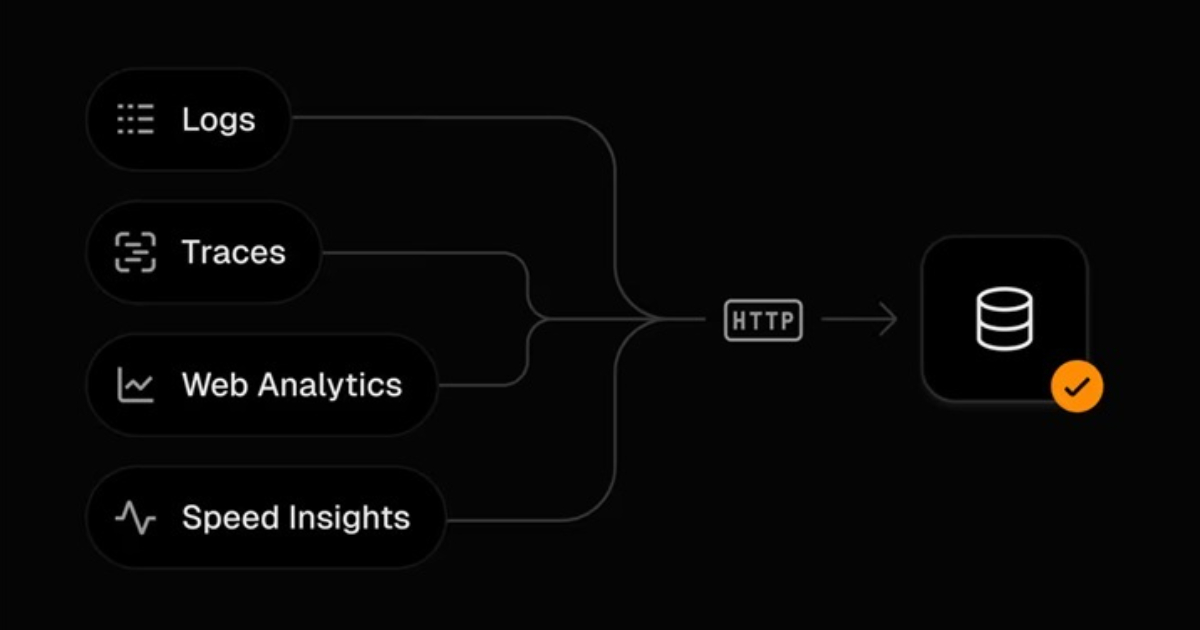Vercel has released Vercel Drains, a system for exporting observability data from its platform into external services. The feature unifies logs, distributed traces, web analytics events, and performance metrics into a single streaming mechanism.
The system covers logs from multiple sources such as runtime, build, firewall, function, and static asset logs. It exports OpenTelemetry compatible trace data, web analytics data like page views and custom events, and Speed Insights metrics including core web vitals. Since Vercel controls the request path from client to serverless execution, the platform automatically enriches log entries with traceId and spanId, linking logs and traces without additional setup.
The configuration can be done through HTTP drains, which allow custom endpoints with flexible format, sampling, and signature options, or through integration drains that connect directly to observability vendors. The exported traces follow OpenTelemetry standards, making them compatible with systems such as Datadog, Honeycomb, Grafana Tempo, and New Relic.
Comparable tools like AWS CloudWatch offers log collection, metrics, and tracing within the AWS ecosystem. Google Cloud Operations provides a similar pipeline combining logs and traces for GCP workloads. Azure Monitor integrates with Application Insights for telemetry. Open-source solutions like Fluent Bit and OpenTelemetry Collector provide custom pipelines, though they require separate deployment and management.
In community discussions, developers noted that the feature simplifies connecting Vercel projects to existing monitoring stacks without extra instrumentation. Software developer Virat Mankali commented:
Next-level observability just dropped! The unified sync across traces, analytics, & logs—plus 1-click export? Absolutely game-changing for dev workflows.
Meanwhile Aparna Sinha, Product Manager at Vercel shared:
Vercel drains give you real time observability data you can use in a tool of your choice, because enterprises have many tools and teams who need different cuts.
Observers also highlighted that Drains could reduce fragmentation in observability pipelines for teams that currently maintain multiple parallel integrations. By consolidating metrics, logs, and traces into one export layer, teams may spend less time on infrastructure management and more time on analysis. This approach may also make it easier for organizations to switch between observability vendors without reworking their applications.
Users may set up multiple drains per team and per project, and configuration is available via the Vercel dashboard under Team Settings.










